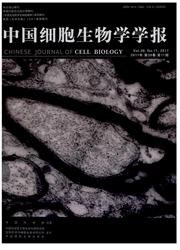

 中文摘要:
中文摘要:
蛋白酶活化受体4(protease-activated receptor 4,PAR4)是蛋白酶活化受体家族成员之一,其N-端胞外区能够被特定的蛋白酶裂解,暴露出的新的N-末端可作为一种独特的配体(tethered ligand,TL)结合并激活自身受体,进而通过其偶联的G蛋白调控相应的下游信号通路。研究表明,PAR4在不同的恶性肿瘤可能呈现截然不同的作用。在肝癌、结肠癌、乳腺癌、软骨肉瘤等组织中表达上调,在胃癌、肺癌等组织中表达下调,说明其可能在肿瘤细胞的发生发展、侵袭转移中通过不同的途径发挥作用。随着PAR4与肿瘤的关系研究的深入,将对其在恶性肿瘤中的作用和机制有更明确的认识,为进一步的临床肿瘤诊断治疗提供更多的思路和依据。
 英文摘要:
英文摘要:
Protease-activated receptor 4(PAR4) is a member of protease-activated receptor family. It can be cleaved by specific proteinases at specific site within the extracellular N-terminus, and the new N-terminal exposed can act as an unique "tethered ligand" that binds to and activates the receptor itself, and regulates the downstream signaling networks mediated by its coupled G protein. Recent studies have shown that PAR4 may play different roles in different malignant tumors. Overexpression of PAR4 has been observed in human cancers including hepatocellular carcinoma, colon cancer, breast cancer and chondrosarcoma, while down-regulated expression of PAR4 has been reported in gastric cancer, lung adenocarcinoma and esophageal squamous cell carcinoma, which indicate that PAR4 may trigger different signalings via distinct mechanisms in tumorigenesis, invasion and metastasis. Further systematic investigations on the relationship between PAR4 and malignant tumors will elucidate the molecular mechanisms of PAR4 action, and provide more ideas and the basis for developing novel PAR4-related cancer diagnostic techniques and effective anticancer drugs/therapies targeting PAR4.
 同期刊论文项目
同期刊论文项目
 同项目期刊论文
同项目期刊论文
 期刊信息
期刊信息
